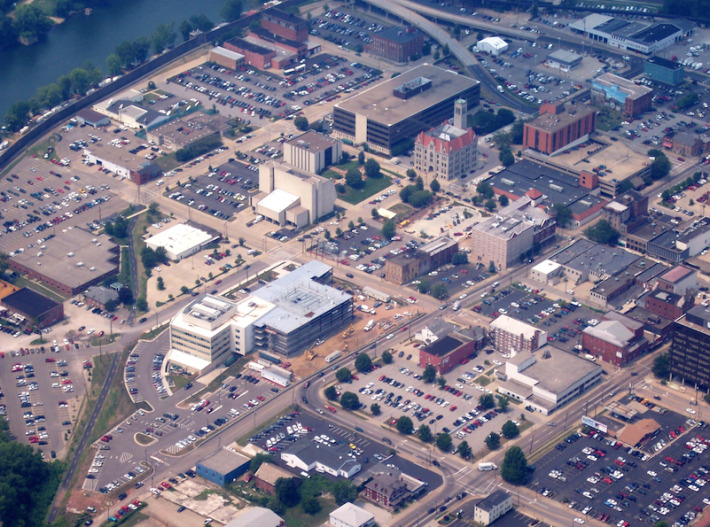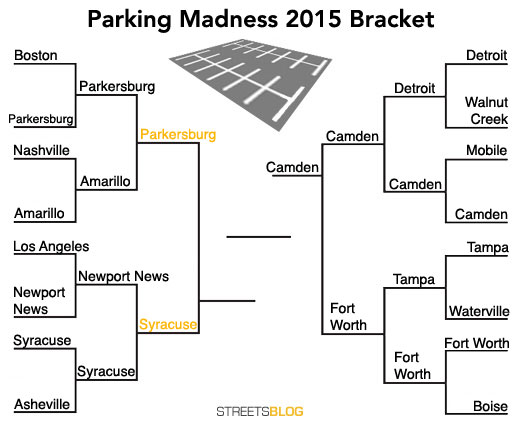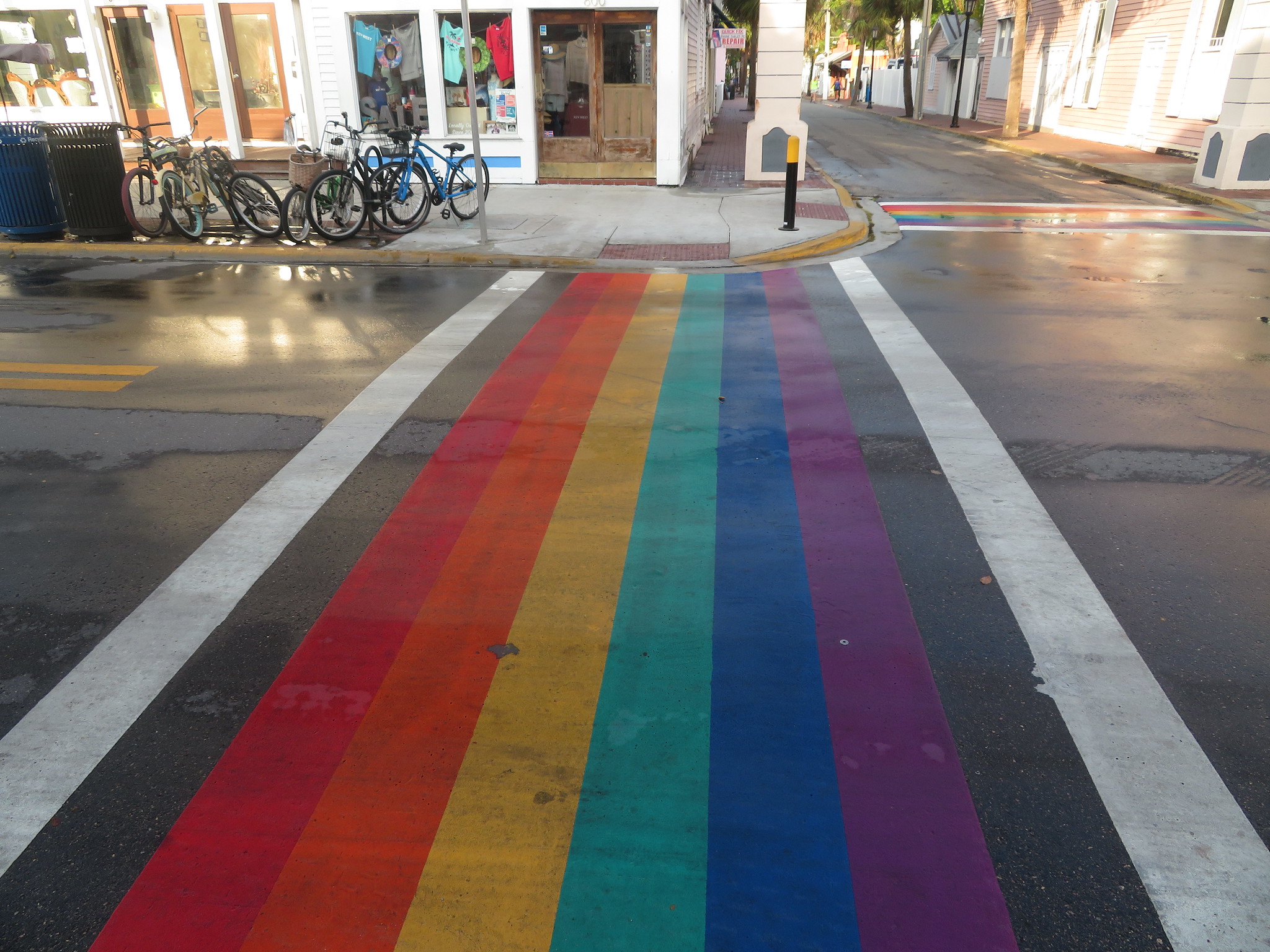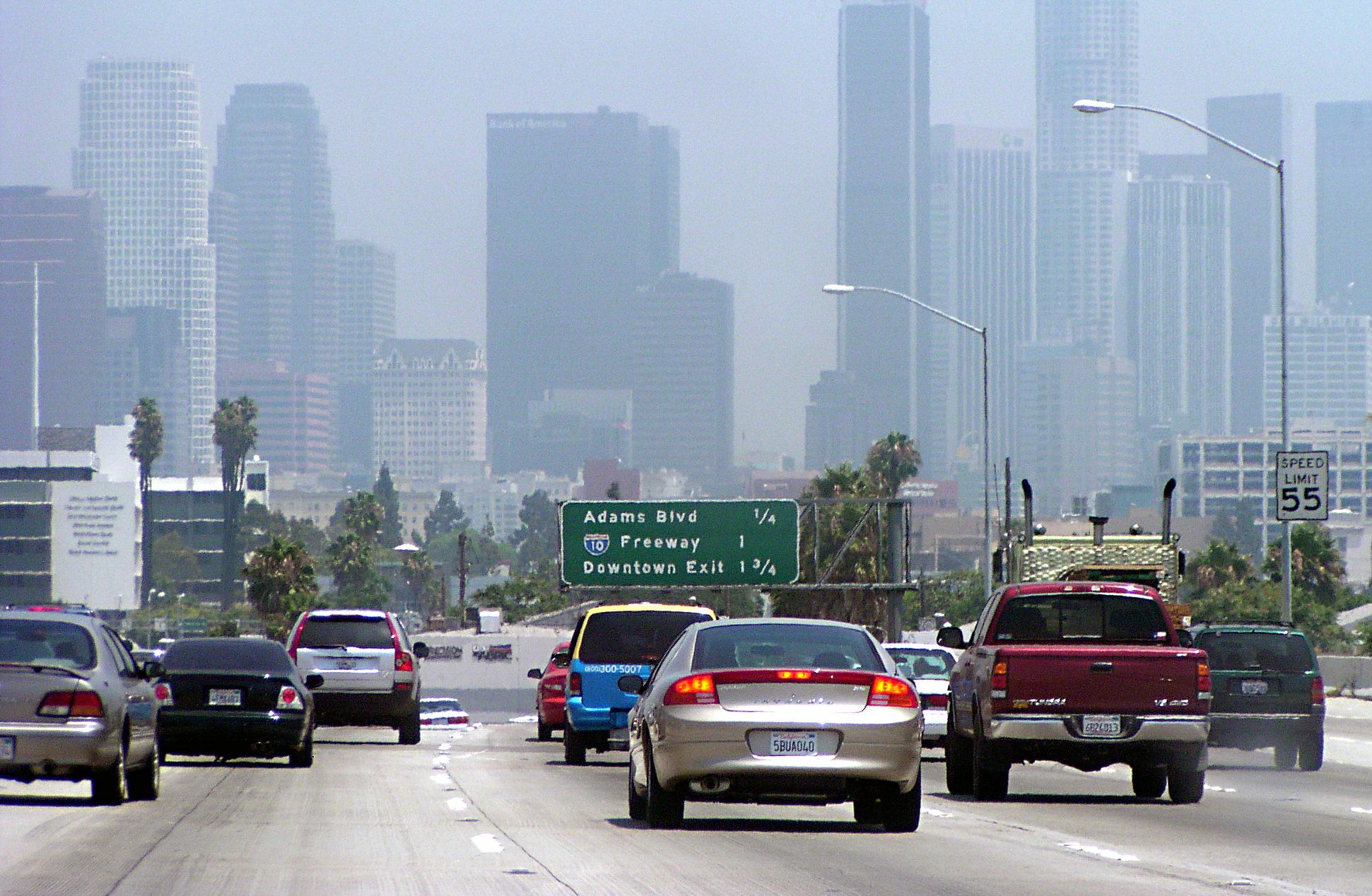Only the ugliest, most wasteful parking craters are still in the running, as the Parking Madness Final Four winnows down to two finalists after this match. The winner will take on Camden, which narrowly defeated Fort Worth, for a chance at the Golden Crater, eternal shame, and, we hope, some good awareness-raising opportunities for local advocates.
So far your voting has brought Syracuse head-to-head against Parkersburg, West Virginia. Who gets to advance to the championship match?
Syracuse
This malignant growth catapulted Syracuse over Asheville and Newport News, Virginia, in the first and second rounds. Marshall Allen says of this space:
I went to school for Landscape Architecture at SUNY-ESF in Syracuse and so I know the city quite well. This image is of downtown Syracuse just south of the I-690/I-81 interchange. This elevated highway goes through the heart of the city, and since its inception the land immediately adjacent to the highway has suffered the consequences of low property values for 50 plus years. Additionally, Syracuse's economy is well past it's prime. These two things have combined to create this horrific parking crater in the heart of New York State's Central City.
Hopefully this award will bring further attention to the surplus parking problem in downtown Syracuse.
In bird's-eye perspective, looking west:

Let's see how it measures up against the competition.
Parkersburg
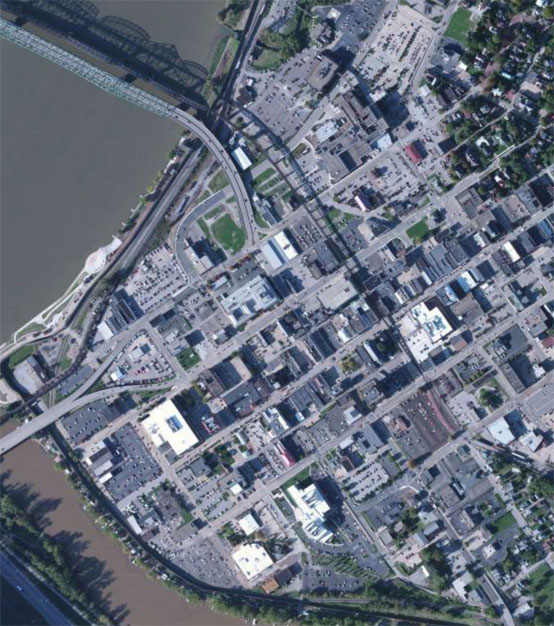
Parkersburg's butchered downtown horrified readers in earlier rounds of the competition, where it took out Boston and Amarillo. Elliott Lewis, who submitted this entry, makes the case for his hometown:
Here is my submission for the Golden Crater, aptly named “Park”ersburg, WV. With a population around 31,000, it is the fourth-largest city in West Virginia and my hometown. This town has seen Native American raids on settlers (and vice versa), George Washington surveying, planned treason by Vice President Aaron Burr (check out the history of Blennerhassett Island), Civil War soldiers, some of the first governors of WV, Wright Brothers flights, birth of the country’s oil and gas industry, important transportation hubs, large-scale hardware and chemical manufacturing, and countless historical events. Those which took place downtown are likely under asphalt (like the home of the first governor of our state).
By my calculations, including street and sidewalk ROWs, the total amount of land in downtown Parkersburg is approximately 61% paved. Of the developable land in this same area (not counting streets), about 50% is dedicated surface parking, most of which is monthly rentals. Yup, the only short term parking is on-street, in one garage, or in a newly-built parking lot off of 6th St. They dedicate half their land to surface parking. Ugh.
The area in question, besides the entire downtown area, is that from 4th Street to the Little Kanawha River. Much of this is dominated by City, County, and Federal government services and includes the County Courthouse (beautiful Romanesque revival) and the Municipal Building (no so beautiful). From the Google Maps link, it shows some buildings currently demolished; the entire block between Juliana/Market/1st/2nd is paved, as will the building across Market Street abutting 2nd St (the old jail). And to make matters more depressing, the area is bounded by elevated railroad tracks near Ann St., an at-grade railway, and a concrete floodwall.
Yes, it's bad. Very bad:
Which one deserves a shot at the title? Tell us below.

